I have used a Konica-Minolta DiMAGE A2, which was a fairly high-end super-zoom camera in 2004, for about 4 years. In the fall of 2007, I purchased a Canon G9. So how much progress has there been in the last 3+ years?
You are currently browsing the archive for the Hardware category.
My sensor measurement series (G9 and 5D) continues. This time, I measured a Konica-Minolta DiMAGE A2, a 8MP camera which was introduced in 2004. How does it compare to a modern 12MP Canon G9?
| Konica-Minolta DiMAGE A2 |
Canon G9 | |
|---|---|---|
| ISO 64 / 80 | 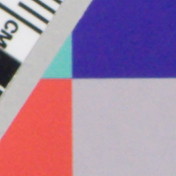 |
 |
| ISO 100 | 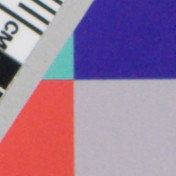 |
 |
| ISO 200 | 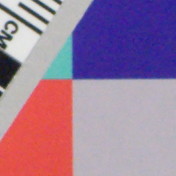 |
 |
| ISO 400 | 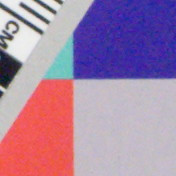 |
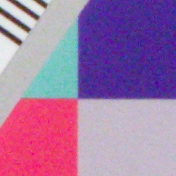 |
| ISO 800 | 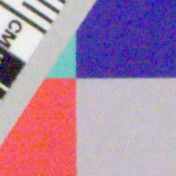 |
 |
| ISO 1600 | N/A | 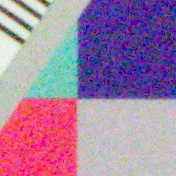 |
Up to ISO 100 there is little difference between the cameras. At ISO 200 and above the 12MP sensor of the G9 shows more noise than the 3 year older 8MP sensor of the A2.
According to dpreview.com the DiMAGE A2 has a 2/3″ (8.80 x 6.60 mm) sensor. The G9 sensor is a 1/1.7″ (7.60 x 5.60 mm) unit. In other words: the pixel pitch is much smaller on the G9. Noise seems to be inversely proportional to the pixel pitch, so it is not surprising that the G9 does worse than the A2.
What happens when the images are run through Noise Ninja?
| Konica-Minolta DiMAGE A2 (Noise Ninja) |
Canon G9 (Noise Ninja) |
|
|---|---|---|
| ISO 64 / 80 | 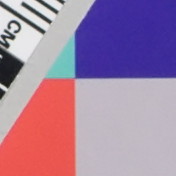 |
 |
| ISO 100 | 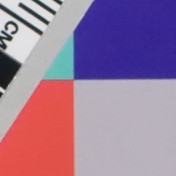 |
 |
| ISO 200 | 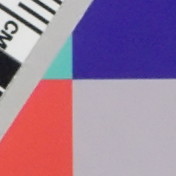 |
 |
| ISO 400 | 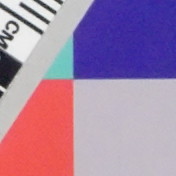 |
 |
| ISO 800 | 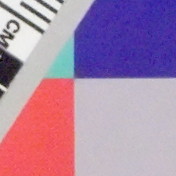 |
 |
| ISO 1600 | N/A |  |
Up to ISO 200, there is little difference between the cleaned up images. At ISO 400 there is slightly more noise in the G9 image, but the difference is very slight. At ISO 800 the A2 image seems definitely cleaner than the G9 image.
I am surprised that in three years there is no improvement in sensor noise. Well, there might have been if you where to create a 2/3″ 8MP sensor with todays technology, but unfortunately there is no such product.
I continued my sensor noise measurements, this time with a Canon EOD 5D. The setup was the same as previously, the only change being the exact location of the WhiBal card.
Surprisingly (at least to me) there is a little noise evident even at the very lowest ISO settings. Read the rest of this entry »
I recently decided that a new tool would be nice and that I needed a fairly compact camera that performs well under low light conditions. Both the Canon G9 and the Panasonic DMC-FZ18 seemed interesting from their specs. [I also looked at FujiFilms offering because in the past they performed very well at high ISO. Unfortunately, a camera with the SuperCCD and image stabilization is currently missing from their model lineup.]
Trawling the net for hard information on sensor noise for these fairly new cameras proved to be a frustrating experience. There seems to be very little information available that allows a good comparison of various cameras. Yes, I know there are many snapshots available, but the conditions under which they are taken varies greatly.
The big review sites (I personally prefer dpreview.com) are somewhat better, but none had a review of both cameras online. In fact, dpreview had published a review on neither camera.
So I decided to create my own test setup to determine how the cameras that I have access to perform and to allow a comparison. Because I just got it, I started with the Canon G9.
Read the rest of this entry »
I purchased a Skymaster DVR 7400 digital satellite receiver with time-shift capability. In the box is the receiver itself and a plastic remote control plus the batteries for the remote as well as a user manual with instructions. The receiver appears well-built and sold from the outside. The remote is a bit on the light side of comfortable and doesn’t feel pleasant in my hands. It is perfectly useable, however, so I won’t complain.
Hooking the receiver up was a snap: connect the satellite feed to the satellite input and one of the two SCART outputs to the TV. There is also an S-Video output as well as an optical S/PDIF digital and RCA analog stereo audio outputs all of which I did not use.
Upon turning on the receiver it automatically found the Astra 19.2°E satellite that my dish is aligned to (this is a no-brainer since it is practically the default satellite here) and tuned in the channels. Wonderful!
The EPG (electronic program guide) implementation is strange: it seems to download all data in real-time, so that it often takes a while to actually get information. There is a hard drive in the device, so why isn’t the information cached there? And while I am wondering: why is the program description slowly scrolled in a separate window automatically every 5 seconds or so instead of allowing me to scroll manually at my own pace?
The EPG is optimized to show what is on a single channel (or up to 4 different channels) for the next few hours. This works well and could be improved by a mode that shows what is on all the different channels at the same time.
It is fairly easy to program a show for recording: a simple button press and after that a confirmation is all that is required. It is less easy to see what was actually programmed afterwards, you have to scroll through pages of individual timer settings which do not seem to have the show title set reliably.
The recording seems to consistently start 2 minutes late. The only way to work around this that I could find was to manually set the start time earlier.
Playback works fine some of the time. I had one show which started skiping about 25 minutes into the recording. There where short (1-5s) pauses in playback every minute or so. After 30 minutes the receiver froze and had to be rebooted to accept any input at all from the remote. This behavior was consistently repeatable.
I had recorded the same show off the same satellite feed using the ElGato EyeTV and everything was fine. The problem was clearly not with the feed. I suspect a hardware or software bug in the receiver.
The manufacturers website did not offer any helpful advice. There was a kind offer to call a premium-rate number for support, an offer which I politely declined, as I always do. The receiver was bought as an entertainment device. I do not find bugs to be entertaining, quite on the contrary. So I gave the device back and will spend my money on something else.
2 stars out of 5.


